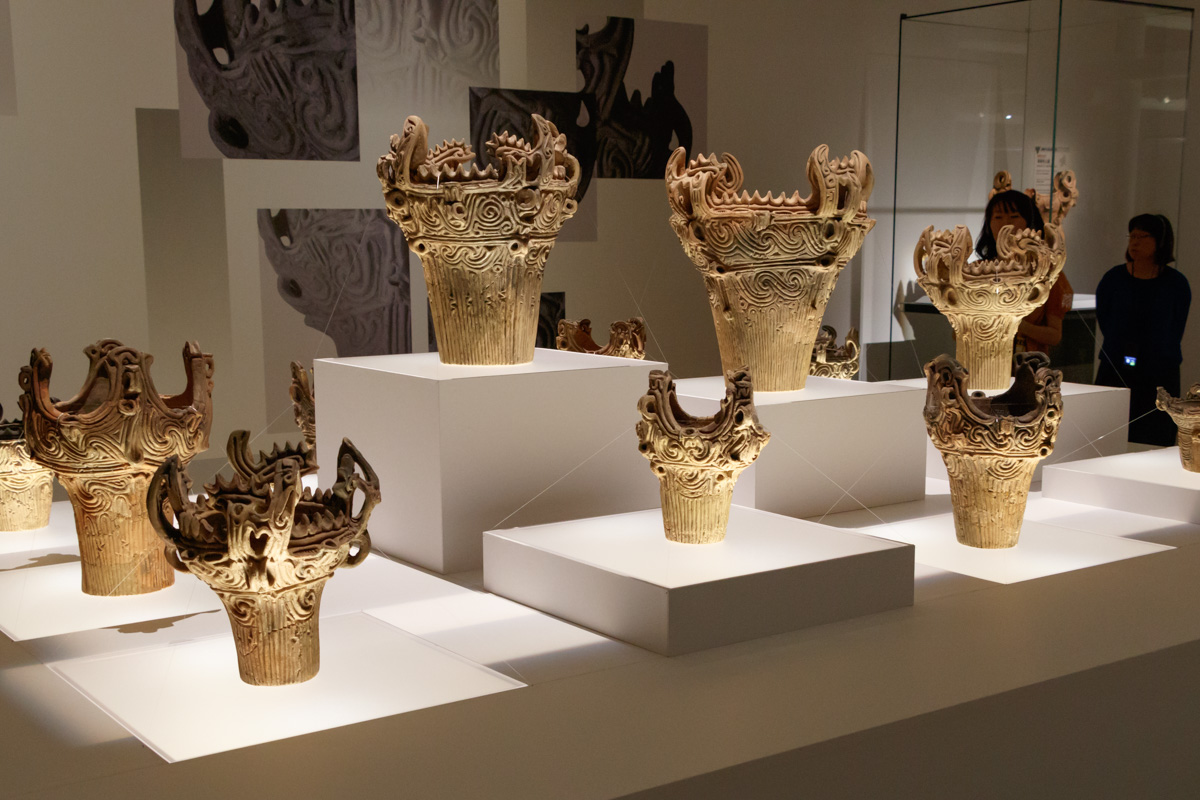
From July 3 (Tuesday) to September 2 (Sun) of 2018, a special exhibition "beat of Beauty of 10 thousand Years of Jomon" is held at the Tokyo National Museum Heiseikan. A press coverage was held on July 2nd, so I will tell you the situation.

Undulation, playing, reversing, complicated and mysterious patterns.
The dynamic feeling and energy expressed by the three-dimensional decoration captures the heart of the viewer and does not separate.
The pottery named " flame type pottery" from the flaming flame shape attracted many people since its early modern times, with its originality and mystery.
In recent years, "Jomon" has attracted public attention from various aspects such as nature conservation, design, fashion, and regional revitalization.
Cool, cute, funny.
Earthenware and clay figures collect support from young people through SNS, and it is becoming more familiar to us.
At the special exhibition "Beauty Beauty of Jomon Period 10,000 Years", the theme of "beauty of Jomon texture" is the theme of "Jomon's beauty", about 200 exhibits were displayed, good quality brought up all over the Japanese archipelago from the Jomon period to the late stage. It introduces the magnificent "swell of beauty" over 10,000 years, and sets it down to the thoughts and techniques of people put in that form.
Venue landscape
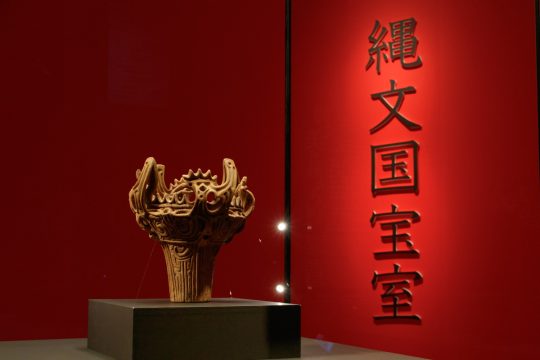

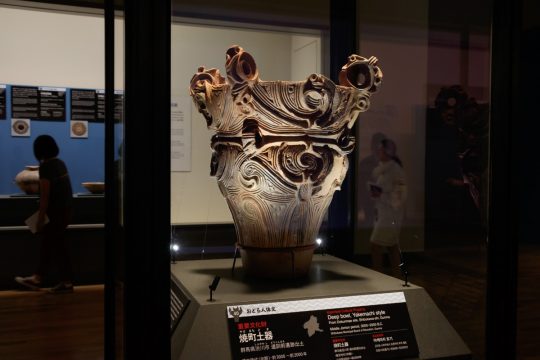


In this exhibition, six themes are set up to introduce "beauty of Jomon texture".
"The beauty of living" that lives in various tools that the people of the Jomon Period lived on.
"Beauty swell" tracing the transition of the beauty of Jomon pottery produced over the long period of about 10,000 years.
"Competition of beauty" comparing Jomon pottery and pottery around the world.
A fire-fired pottery designated as a national treasure and a clay dog is gathered "the best of Jomon women's beauty".
"The beauty of prayer, the form of prayer" that gathered shapes that embodied the wishes and prayers of the Jomon Period.
And "Newly Tsutomu Beauty" introducing the beauty of Jomon loved by artists and writers such as Taro Okamoto.
Particularly in chapter 4, a group of works that can be said to be "the extreme of Jomon's art form " such as the National Fireworks "fire-type pottery" and "Jomon Jomon's Venus" are exhibited, it is exactly the "white eyebrow" of this exhibition I will.
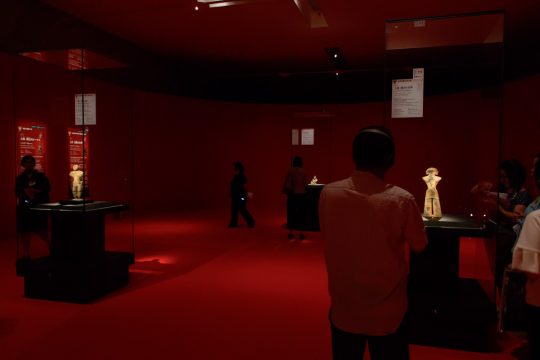
Exhibition venue of Chapter 4 colored with the red "festival"
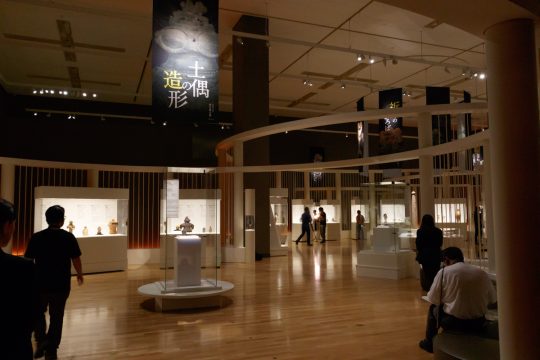
The exhibition space of chapter 5 which was configured so that circular objects overlap
In addition, the author's attention in this exhibition is its space composition. As the name of "fire-type earthenware", the exhibition hall of Chapter 4 dyed in red with the symbol of fire and festivities, and the "annular village" which places the house in a circle and makes a square in the center, such as Jomon The exhibition space of Chapter 5 consisting of "circle" which is often found in ruins of the era. Even if we take up each space, it is full of the unique production of Tohaku.
Natural sounds reminiscent of the Jomon period are heard at the venue, and furthermore, at night opening time, it is scheduled to have its own light up. Please feel free to explore every corner of the venue with a feeling of getting lost in the Jomon period.
Exhibition work introduction
The goddess of the tokyo Jomon
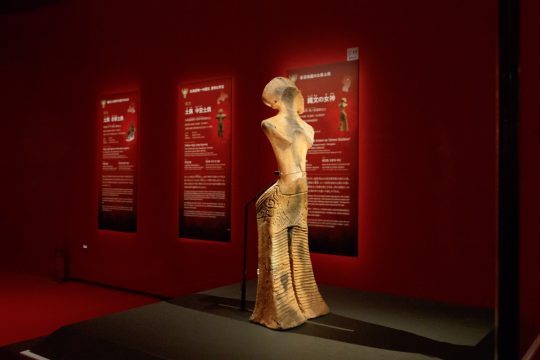
Yamagata Prefectural Museum in the middle of the Jomon period

Many people tell the story "It is cooler to see from the side". Sharp "Kubire" fascinates viewers
Among the national treasure designated as a national treasure, the longest dove that boasts 45 cm. An elegant figure called Hachikaura Beauty is distinctive. Although other genres are often expressing maternal affluence, this "goddess of Jomon" gives a rather sharp impression, it is attractive for novelty and sophistication that leads to contemporary art is.
"There is no face in this clay figure, but the Jomon people had a face of women full of charity, surely the Jomon people had a technique to show them in such a form that they did not dare express It is. "
That is what Mr. Kinya Shinagawa is the archaeological head of the Tokyo National Museum.
"There are also shapes that imitate animals, so it is easy to make shapes as they are, but they did not finish them in their original form.The way Jamon's There is a strange model. "
Light shielding clay evening
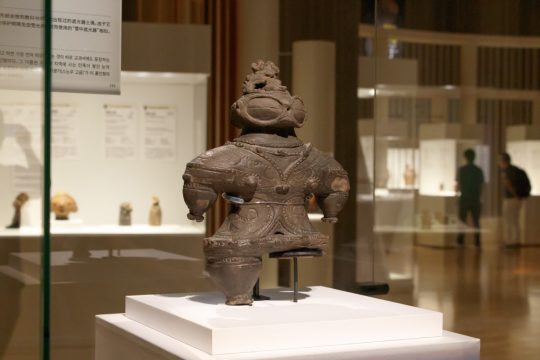
Late Jomon period Tokyo National Museum
A light shielding clay dam, which is "the most famous clay figure in Japan". Speaking of clay figures, there are many people who first imagine this light blocker clay figure. There are various interpretations about the representation of the characteristic almond-shaped eyes, and it is assumed that the snow shielding theory (which Eskimo wears during the action in the snow) and the face of an infant or a deceased who closes his eyes and sleeps There was also a theory.
A spectacular pattern decorating the whole body is also one of the highlights. Although the left foot is missing, Mr. Shinagawa said "It is the figure that Milo's Venus (both hands are deficient) should be, and this is what it should be supposed to be", he says that there is this attractive attraction here I will. Is it a deficit? Or is this the original figure? By all means, please check directly at the venue and check it!
Heart shaped clay
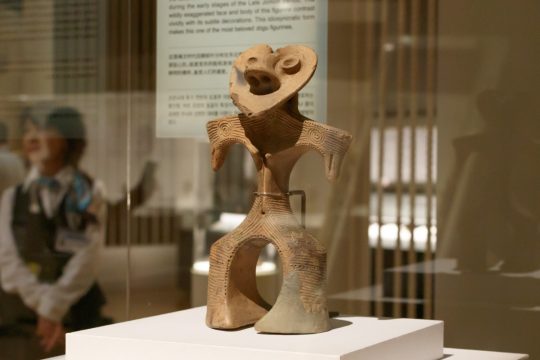
Late Jomon Period Excavation from Higashi Azuma-machi Gunma Prefecture
"Instemble" Heart shaped clay evening inevitable. In the late Jomon Period, the name is given because the shape of the face forms a unique heart shape in the northern part distributed from northern northern part to northern kanto region in the anterior lobe. The contrast between expressions of extremely deformed faces and bodies and delicate patterns is distinctive, and many people have been loved by their personality. Heart shaped clay evening was adopted also in the design of the stamp from 1950 in Showa era. From now on through SNS, it seems to be loved by women of especially young generation.
Wooden basket Jomon Pochette
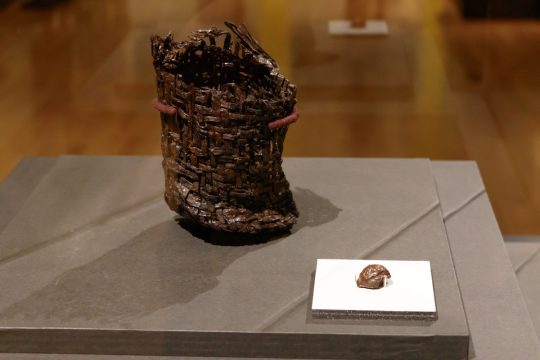
Jomon period middle Aomori prefectural Board of Education (Jomon period amusement park storage)
It seems that the warmth and delicacy of handicrafts in the Jomon period seem to be felt, and my favorite exhibition. It is the full size walnut that is placed on the side. Speaking of Jomon Period, images of pottery are strong, but knitting products such as baskets and bags made by knitting wooden bark, bark and plant fiber were used.
This work is a famous work called "Jomon Pochette", excavated from the familiar "Sannai Maruyama ruins" in textbooks. What I can feel from this work is the beauty of handicraft made by taking advantage of nature's blessings, considering the characteristics of the material. The meshes made regularly in the vertical and horizontal directions are somewhat similar to the precise patterns of the clay figure, and the interest will emerge what delicate sensibilities the people living in that period had.

"There are" rings "where people gather."
Personally what remained in the impression is Mr. Shinagawa's comment on the space composition of Chapter 5.
"In this" circle "that people in the Jomon Period spent, I hope that you can remember such wishes and prayers as you have usually forgotten by meeting various forms of prayer."
The circle is "rim". "Wa" is the loop. If you think about it, the circle and the circle all lead to the words that represent the encounter and intimacy between people and people.
In the circle of nature in the Jomon period, and in the relationship between people and people, what did the Jomon people feel and how did they live?
A group of works exhibited at the special exhibition "Beat of Beauty of Jomon Period of 10,000 Years" will convey to us the thoughts of the people at that time that were put in that form.
Why do not you visit the venue and touch one end?
Summary
| Exhibition name | Special exhibition "Beat of beauty of 10 thousand years of Jomon" |
| Society | July 3 (Tuesday) – September 2 (Sun) of 2018 9:30 am – 5 pm (Admission is 30 minutes before closing) ※ Friday · Saturday until 9 pm, Sunday and July 16 (Mondays · congratulation) until 6 pm |
| closing day | Monday, July 17 (Tuesday) ※ However, July 16 (Monday · Holiday), August 13 (Monday) opening |
| Venue | Tokyo National Museum Heiseikan |
| Admission fee | General 1600 yen (1300 yen) College student 1,200 yen (900 yen) High school student 900 yen (600 yen) ※ () is a group rate of 20 or more ※ Free from junior high school students ※ Persons with disabilities and their carers are free (Please show disabled persons etc at entry) |
| Official site | http://jomon-kodo.jp/ |


